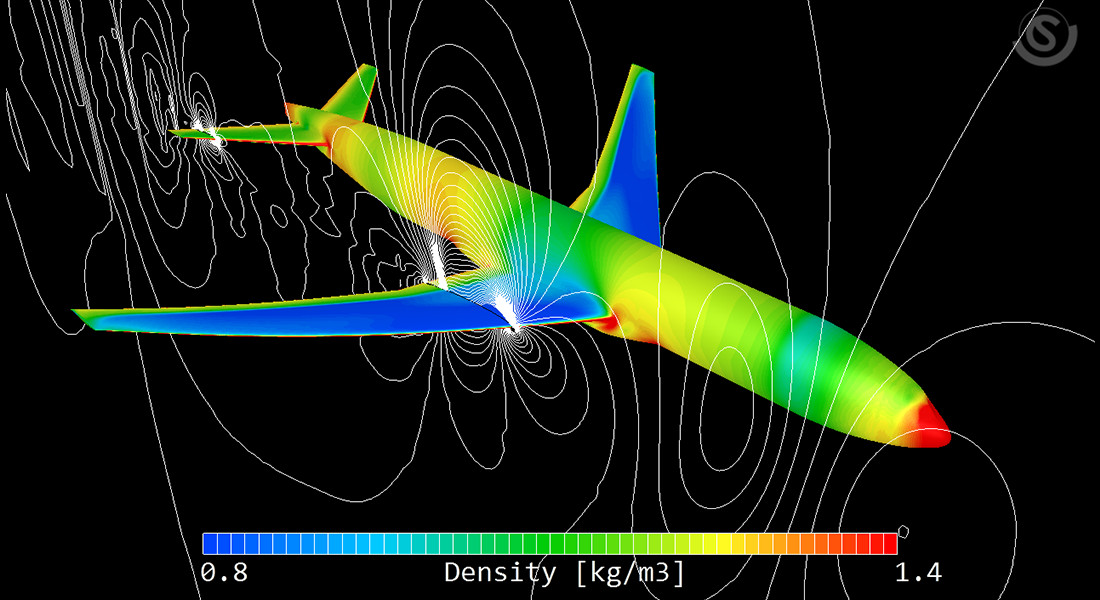Compressibility (compressible, incompressible)
When density change due to compression or expansion of fluid is small enough that it can be ignored, a large amount of simulation cost can be cut down by considering fluid as incompressible.
On the other hand, when treating a supersonic flow or a significant expansion / contraction of volume, a compressible fluid analysis considering density variation is suitable. To treat a compressible fluid, use the pressure-based calculation method, or, for a stable calculation even with a high Mach number, use the density-based calculation method.
Shock tube problem
In a shock tube, high-pressure gas and low-pressure gas are separated by a thin diaphragm. The rupture of this diaphragm will cause 3 different waves: a shock wave to the low-pressure region (the right wave), an expansion wave to the high-pressure region (the left wave) and a catalytic wave (the middle wave). The focus is to obtain the velocity due to these waves.
Shock wave and catalytic wave are thin waves whereas expansion wave gets thick with time. Furthermore, shock wave and expansion are accompanied by density and pressure changes whereas catalytic wave is accompanied by only density change and no pressure change is observed. These characteristics can be well captured in a compressible fluid analysis with scFLOW.
Analysis of a hydrogen tank filling
A low-density hydrogen gas is compressed to fill the enclosed tank. As the filling progresses, hydrogen density rises followed by the pressure rise inside the tank. Compressible fluid analysis is suitable for treating a flow field without an outlet.

